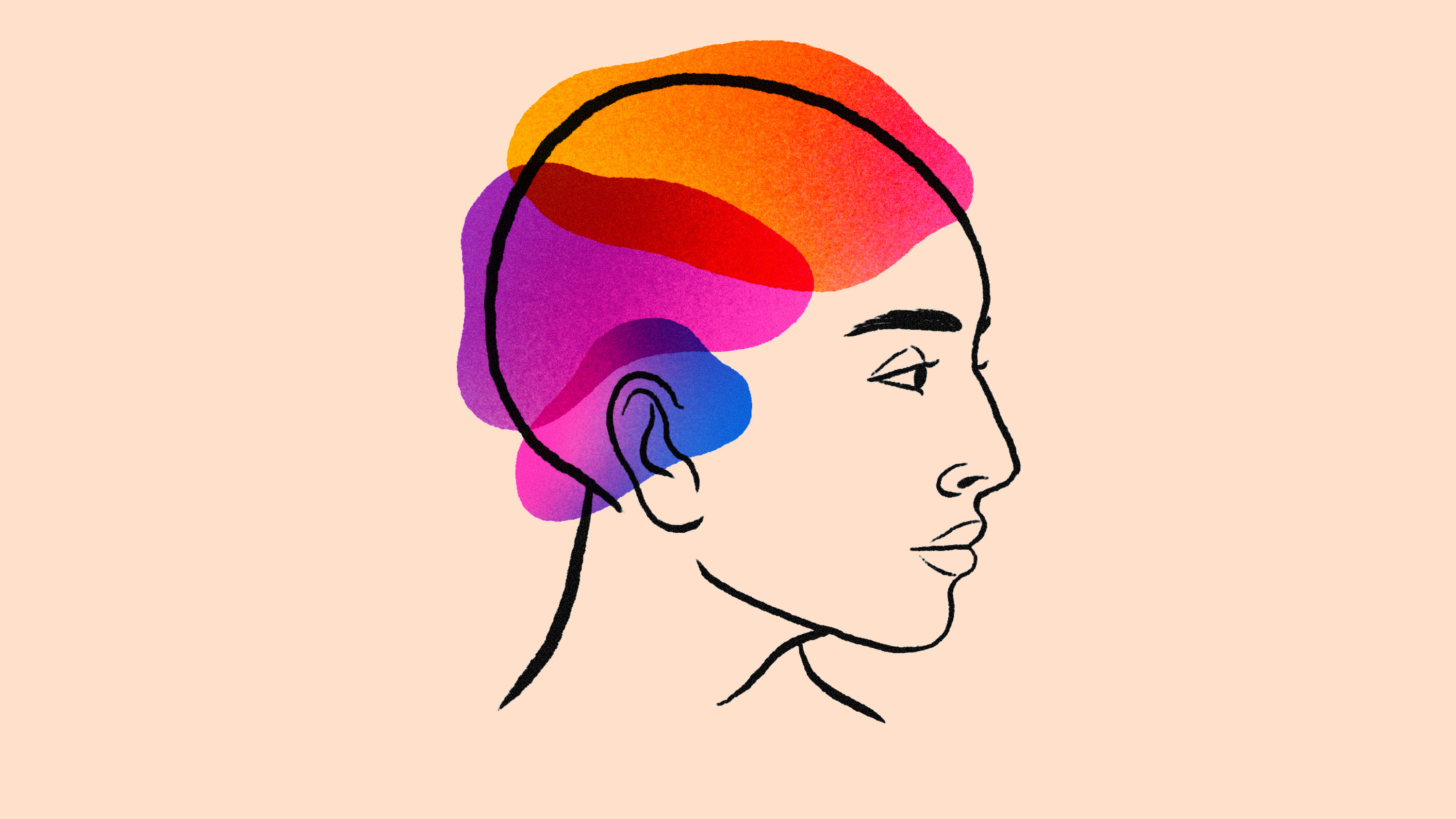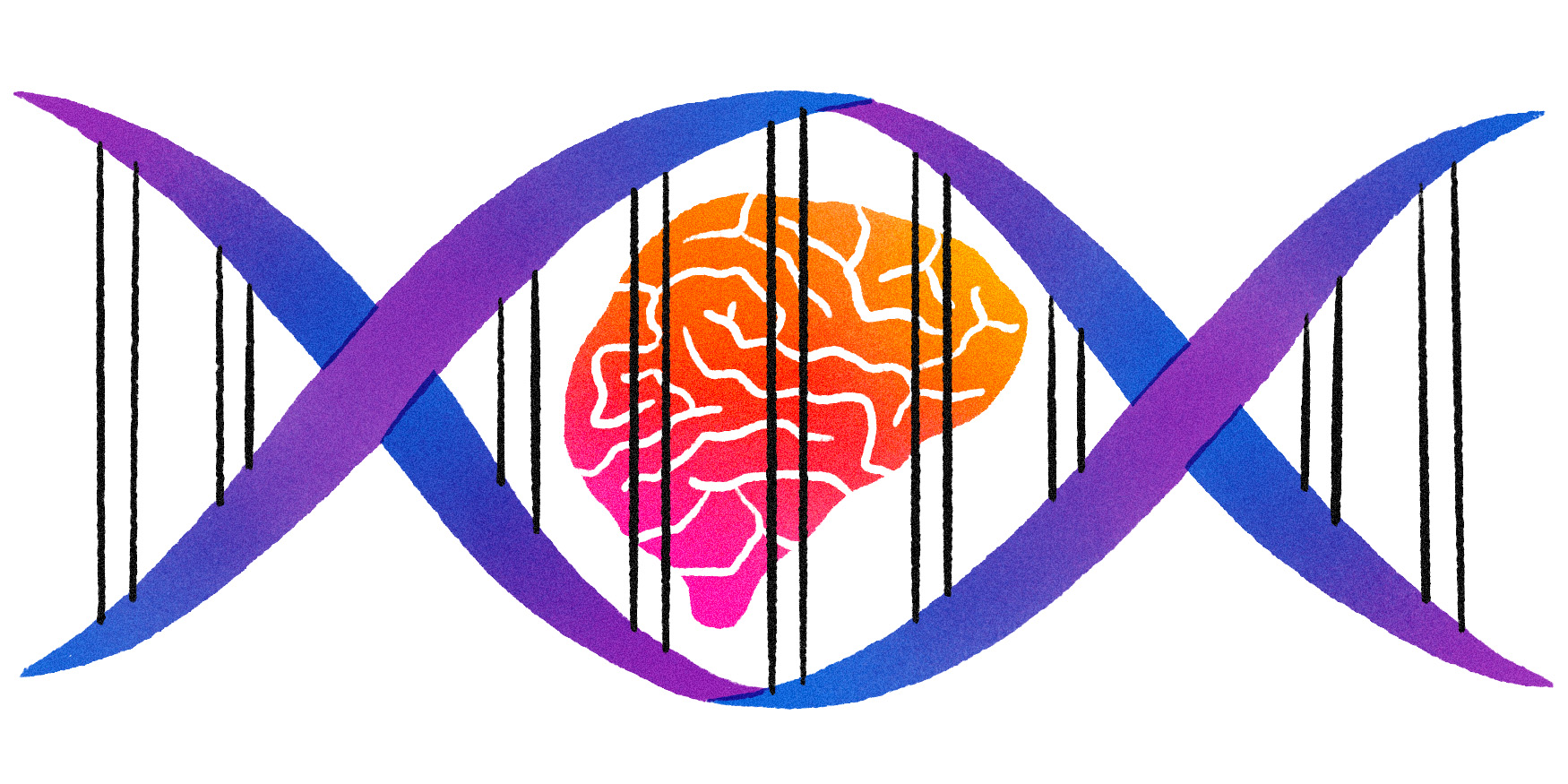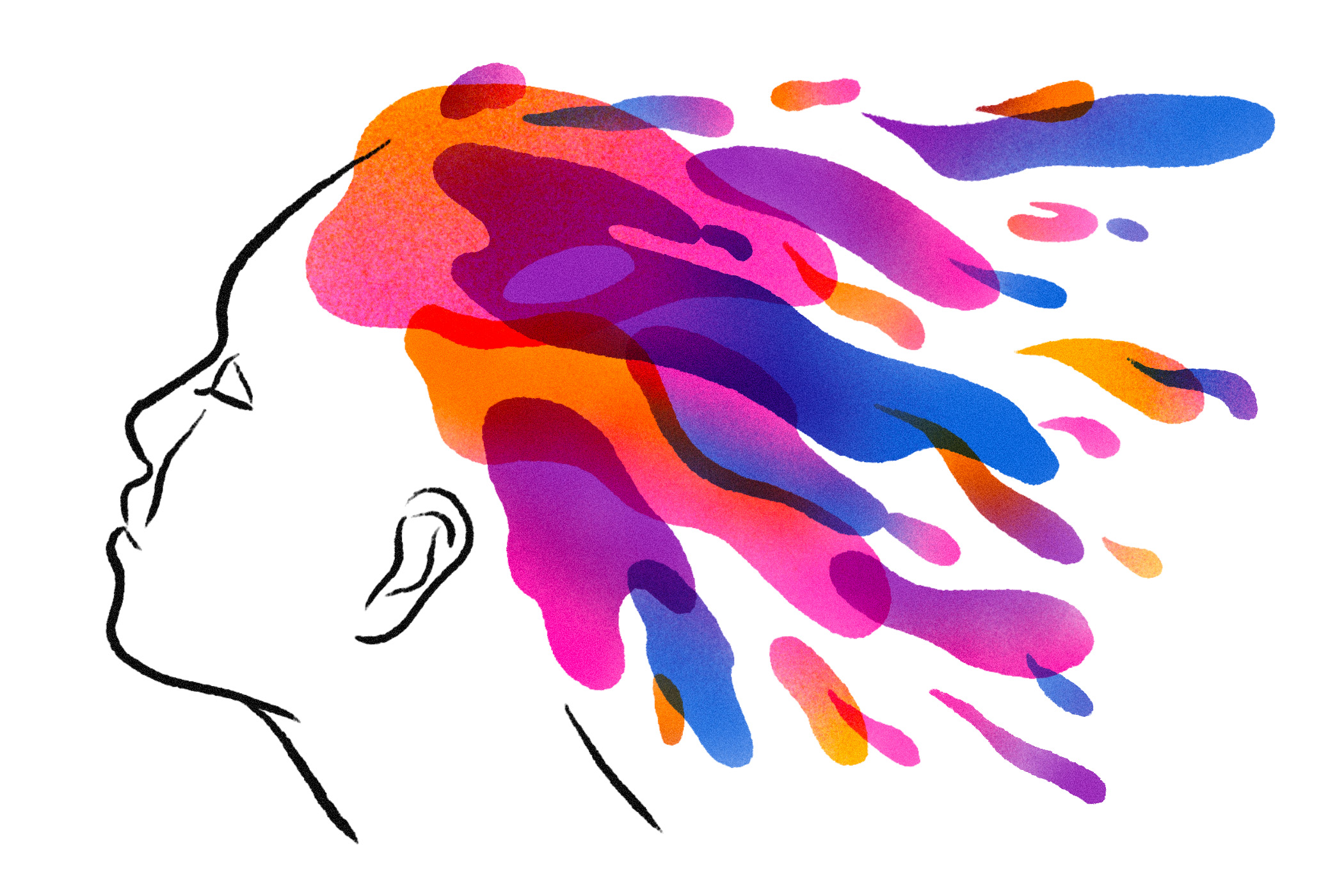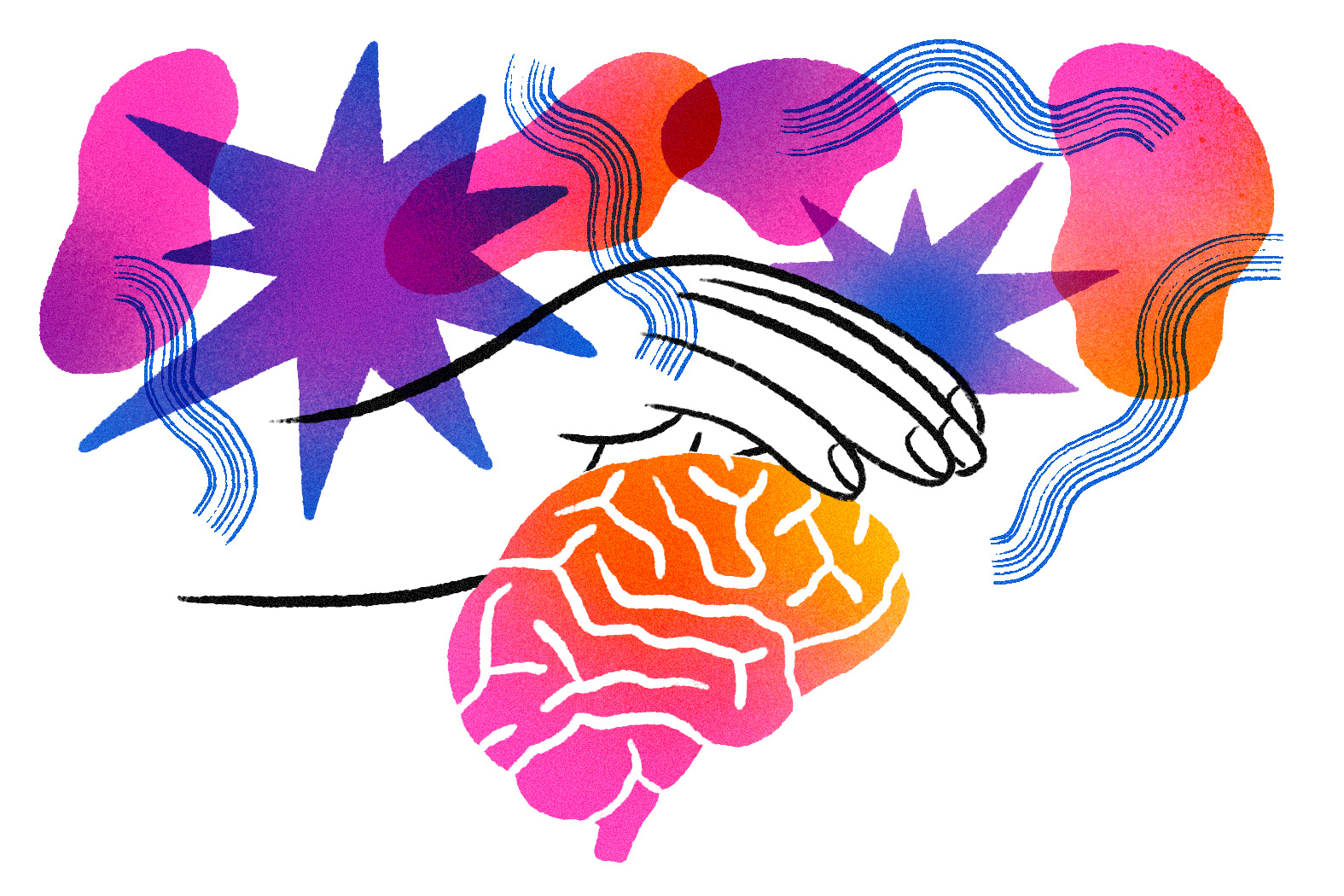Eight ways scientists are unwrapping the mysteries of the human brain
Optogenetics and advanced imaging have helped neuroscientists understand how memories form and made it possible to manipulate them.

There is no greater scientific mystery than the brain. It’s made mostly of water; much of the rest is largely fat. Yet this roughly three-pound blob of material produces our thoughts, memories, and emotions. It governs how we interact with the world, and it runs our body. Increasingly, scientists are beginning to unravel the complexities of how it works and understand how the 86 billion neurons in the human brain form the connections that produce ideas and feelings, as well as the ability to communicate and react. Here’s our whistle-stop tour of some of the most cutting-edge research—and why it’s important.
How does a collection of cells create thoughts and behaviors?
What it is:
Cognitive and behavioral neuroscientists study how proteins, genes, and the structures of our brains give rise to behaviors and mental processes. How does the brain learn and remember things? How does it make decisions? How does it process and respond to the world?
Why it matters:
Understanding memory may help us treat Alzheimer’s; understanding reward-seeking may help address addiction; understanding emotions may provide new clues about preventing depression.
The cutting edge:
Sheena Josselyn, a neuroscientist at the Hospital for Sick Children in Toronto, studies how and where the brain stores memories. She says identifying the neural circuits—interconnected groups of neurons—responsible for storing specific memories could be key for treating memory disorders, because it’s not optimal to simply give someone a drug that affects the whole brain.
“We can’t treat the brain like a bowl of soup—if we add in a little bit of oregano, everything will come out better,” Josselyn says. “We need to understand exactly where we want to target things.” To create more precisely targeted treatments, she wants to better understand the neurons and neural circuits that are important “in forming and housing and recalling a memory.”
Recently, Josselyn’s lab identified a new pathway that’s important for retrieving older memories. This pathway leads from the hippocampus—a brain region that controls learning and memory—to the thalamus, which acts as a sort of sensory information relay station in the brain. When the researchers turned off this pathway in mice, the animals could remember an experience from the day before but not one from the previous month.
Kay Tye, a neuroscience professor at the Salk Institute, studies the neural pathways involved in learning and in emotions such as loneliness to shed light on substance abuse and anxiety. Tye’s lab has identified a neural pathway that helps guide behavior when simultaneous cues signal positive and negative outcomes.
The next frontier:
Once we better understand the brain regions, pathways, and neurotransmitters involved in memory, anxiety, and fear—and how these can be altered—we can develop more precise strategies to treat diseases.
It’s in your genes
What it is:
The field of neurogenetics explores how genes affect the structure and function of the nervous system.

Why it matters:
If we can identify the role of genes, we might be able to diagnose brain disorders more precisely and accurately, or even intervene to halt their progress.
The cutting edge:
Steven McCarroll, director of genomic neurobiology for the Broad Institute’s Stanley Center for Psychiatric Research, studies genes related to schizophrenia. In collaboration with a team of researchers, he has identified variants in a gene associated with the disorder; these variants generated more of a protein involved in tagging synapses (connections between neurons) for removal.
When McCarroll and his colleagues increased the expression of the gene in mice, the mice ended up with fewer synapses. Their working memory was impaired, and their social behavior changed. Researchers think these genetic variations may be related to the synapse losses and behavioral changes observed in people with schizophrenia.
Ying-Hui Fu, a professor of neurology at the University of California San Francisco, has identified three different gene mutations that reduce the amount of sleep people need.
One of them even protects against the memory problems normally associated with sleep deprivation.
Other researchers are searching for genes that keep people relatively healthy even when they carry other genes that put them at risk for early-onset Alzheimer’s disease.
The next frontier:
By identifying how genes contribute to diseases, scientists may be able to develop treatments, perhaps by using drugs to block the action of a protein produced by a disease-causing gene or to mimic the actions of a protective one. Gene therapies are also being explored to silence the harmful genes. Such a treatment for the neurological disease amyotrophic lateral sclerosis (ALS) has been cleared for trials in the US; a trial of gene therapy for Huntington’s disease is underway.
Engineering the brain
What it is:
Neuroengineers are looking for ways to connect the nervous system, including the brain, to machines. Experimental devices can translate neuronal activity into text or make it move an artificial limb; some convert information from artificial sensors into nerve stimulation that the brain can understand.
Why it matters:
Technology can now help restore the ability to communicate, feel sensations, and move in people who are paralyzed or have undergone amputations. Brain-stimulating implants may also offer new ways to treat epilepsy, chronic pain, and blindness.
The cutting edge:
Neuroengineers at Stanford are using measurements of brain activity to help restore function in people who are paralyzed. Recently, working with a man paralyzed from the neck down, the researchers implanted two arrays of tiny electrodes in a part of his brain responsible for hand movement. As the man imagined writing letters, the scientists used machine learning to translate his brain activity into letters on a screen. Using this system, the man could write 90 letters per minute—more than doubling the previous record for typing via brain activity.
In the future, these devices could enhance cognition, allow us to communicate brain to brain, or create ultra-realistic virtual-reality experiences incorporating all of our senses.
Other neuroengineers are working on prosthetics that can transmit sensory information back to the user. Luke Osborn, a neuroengineer at Johns Hopkins University, is working on ways to transmit different types of sensations in people who have undergone amputations by stimulating nerves in the limb above the amputation site. So far, the devices can transmit sensations of pressure and even mild pain. Pain sensations are a critical information source, says Osborn, letting us know when we might be doing something unsafe.
The next frontier:
Devices that connect brains and computers could potentially be used not just to restore functions that have been lost but also to enhance our brains’ abilities. In the future, these devices could enhance cognition, allow us to communicate brain to brain, or create ultra-realistic virtual-reality experiences incorporating all of our senses.
How to make a brain
What it is:
Developmental neuroscience explores how the structure and function of the brain change over time as an organism matures. How do individual neurons find their way to the proper place in the brain?
Why it matters:
Understanding brain development—and what causes it to go awry—could help us address conditions like microcephaly, autism, and ADHD. And if we know how events before birth and during childhood affect the structure and function of the developing brain, we will be better able to give children the best shot at healthy development.
The cutting edge:
Madeline Lancaster, at the Medical Research Council Laboratory of Molecular Biology in the UK, studies brain development using organoids, three-dimensional cell clusters derived from human stem cells that self-organize into a miniature, simplified—but still brain-like—organ. To more accurately model the human brain, she’s creating organoids that live longer and mimic different types of brain structures.
Using this approach, Lancaster has discovered that a protein called ZEB2 is critical for regulating the remarkable developmental expansion that makes human brains so much larger than ape brains. Understanding processes that govern brain size could help us better understand the causes of microcephaly and other disorders in which the fetal brain fails to develop properly.
Brain development that occurs after birth is also important. Rebecca Saxe at MIT is working to understand the brain structures and activities responsible for social cognition, which allows us to consider the mental states of other people.
Saxe has discovered a particular brain region that is key; by studying how activity in this region and others changes over the course of childhood, she may be able to understand how social abilities develop. She has also found that these brain activity patterns are altered in people with autism spectrum disorders.
The next frontier:
Even though researchers are starting to understand some of the processes that govern development and have identified things that can derail it, we’re far from being able to intervene when such problems occur. But as we gain insights, we could someday test therapies or other ways to address these developmental issues.
Computers that imitate the brain
What it is:
Computational neuroscientists use mathematical models to better understand how networks of brain cells help us interpret what we see and hear, integrate new information, create and store memories, and make decisions.
Why it’s important:
Understanding how the activity of neurons governs cognition and behavior could lead to ways to improve memory or understand disease processes.
The cutting edge:
Terry Sejnowski, a computational neurobiologist at the Salk Institute, has built a computer model of the prefrontal cortex and analyzed its performance on a task in which a person (or machine) has to sort cards according to a rule that’s always changing. While humans are great at adapting, machines generally struggle. But Sejnowski’s computer, which imitates information flow patterns observed in the brain, performed well on this task. This research could help machines “think” more like humans and adapt more quickly to new conditions.
Aude Oliva, the MIT director of the MIT-IBM Watson AI Lab, uses computational tools to model and predict how brains perceive and remember visual information. Her research shows that different images result in certain patterns of activity both in the monkey cortex and in neural network models, and that these patterns predict how memorable a certain image will be.
The next frontier:
Research like Sejnowski’s may inspire “smarter” machines, but it could also help us understand disorders in which the function of the prefrontal cortex is altered, including schizophrenia, dementia, and the effects of head trauma.
Why do things fall apart?
What it is:
Researchers are trying to determine the genetic and environmental risk factors for neurodegenerative diseases, as well as the diseases’ underlying mechanisms.

Why it’s important:
Improving prevention, early detection, and treatment for diseases like Alzheimer’s, Parkinson’s, Huntington’s, chronic traumatic encephalopathy, and ALS would benefit millions of people around the world.
The cutting edge:
Yakeel Quiroz, at Massachusetts General Hospital, studies changes in brain structure and function that occur before the onset of Alzheimer’s symptoms. She’s looking for biomarkers that could be used for early detection of the disease and trying to pinpoint potential targets for therapeutics. One potential biomarker of early-onset Alzheimer’s that she’s found—a protein called NfL—is elevated in the blood more than two decades before symptoms appear. Quiroz has also identified a woman with a protective genetic mutation that kept her from developing cognitive impairments and brain degeneration even though her brain showed high levels of amyloid, a protein implicated in Alzheimer’s development. Studying the effects of this beneficial mutation could lead to new therapies.
Researchers at the Early Detection of Neurodegenerative Diseases initiative in the United Kingdom are analyzing whether digital data collected by smartphones or wearables could give early warnings of disease before symptoms develop. One of the initiative’s projects—a partnership with Boston University—will collect data using apps, activity tracking, and sleep tracking in people with and without dementia to identify possible digital signatures of disease.
The next frontier:
As we learn more about the underlying causes of neurodegenerative diseases, researchers are trying to translate this knowledge into effective treatments. Advanced clinical trials targeting newly understood mechanisms of disease are currently under way for many neurodegenerative disorders, including Alzheimer’s, Parkinson’s, and ALS.
It’s all connected
What it is:
Connectomics researchers map and analyze neuronal connections, creating a wiring diagram for the brain.
Why it’s important:
Understanding these connections will shed light on how the brain functions; many projects are exploring how macro-scale connections are altered during development, aging, or disease.
The cutting edge:
Mapping these connections isn’t easy—there may be as many as 100 trillion connections in the human brain, and they’re all tiny. Researchers need to find the best ways to label specific neurons and track the connections they make to other neurons in remote parts of the brain, refine the technology to collect these images, and figure out how to analyze the mountains of data that this process produces.
A collaboration that included Google computer scientist Viren Jain and Harvard neuroscientist Jeff Lichtman recently completed the most detailed map of a section of the human brain ever produced. By imaging one cubic millimeter of brain at the nanoscale level, they mapped 50,000 cells and more than 130 million synapses, resulting in 1.4 petabytes of data. Previously, Lichtman had helped develop Brainbow, a technique that allows colored labeling of individual neurons in living animals, enabling scientists to trace neuronal connections.
Sebastian Seung, a computational neuroscientist at Princeton, pioneered a technique that uses crowdsourcing and machine learning to turn raw images into usable three-dimensional neuronal maps, with synapses identified and cell types classified. In the first project, called EyeWire, citizen scientists helped map neurons in the retina. The current project, FlyWire, is an ambitious effort to map neuronal connections in the entire brain of a fruit fly.
The Allen Institute in Seattle, an important player in brain connectivity research, makes its brain maps available to the public. A mouse brain connectivity atlas that it’s compiled includes cell-type-specific maps of connections between the thalamus (a sensory and motor relay station) and the cortex.
The next frontier:
Mapping the individual neuronal connections in the human brain is no small feat. There are also variations both between and within individuals—connections will likely change as our brains develop, learn, and age. Creating individual microscale brain maps for everyone would likely provide us with an unprecedented level of insight, but for now that’s a far-off dream.
Mental health
What it is:
Why and how psychiatric illnesses and brain disorders develop is still largely a mystery. Neuroscientists use neuroimaging, genetics, biochemistry, machine learning, behavioral studies, and more to understand the molecular and environmental causes.

Why it’s important:
Mental illness is a leading cause of disability worldwide. Some 264 million people have depression, 45 million have bipolar disorder, and 20 million have schizophrenia.
The cutting edge:
Satrajit Ghosh, a neuroscientist at MIT, is using speech patterns and neuroimaging to improve mental-health assessments in humans. In the short term, Ghosh hopes this can be used to improve diagnosis, and there’s already some evidence that it can help predict which patients will respond to which therapies. But in the future, Ghosh says, “we want to be able to measure something, predict some future state, and … adjust behavior on the fly so that you will never hit that state.”
Therapies using brain stimulation are providing new treatment options for obsessive-compulsive disorder (OCD). Deep-brain stimulation—in which electrodes are implanted in the brain—offers substantial relief for some people whose OCD doesn’t respond to other treatments. Less invasive forms of neural stimulation have shown promising early results as well. Just five days of noninvasive brain stimulation reduced obsessive-compulsive behaviors for three months in people who displayed some OCD symptoms.
Researchers are making strides in understanding and treating substance-use disorders, identifying brain connectivity patterns that increase or decrease the risk of developing an addiction. Perhaps someday, neural pathways that help people resist addiction could be reinforced therapeutically.
Drugs once classified as recreational are being explored for the treatment of mental illnesses. In 2019, the US Food and Drug Administration approved esketamine for treatment-resistant depression, the first time in 30 years that a drug with a new mechanism of action had been approved for the condition. More recently, a stage 3 clinical trial showed that people with post-traumatic stress disorder who received MDMA (a.k.a. Ecstasy) along with traditional therapy improved substantially compared with those who received therapy alone. Psilocybin—the active component in magic mushrooms—is in clinical trials for the treatment of depression, alcohol-use disorder, OCD, anorexia, and more.
The next frontier:
Someday, patients with brain disorders may be assessed and treated based on their genetics, along with biomarkers and brain-activity scans.
Researchers are exploring how genetics could guide treatment choices for patients with depression, how connectivity in brain regions like the amygdala could lead to a more personalized understanding of disorders related to fear and anxiety, and how blood-based biomarkers could track treatment response in depression and bipolar disorder.
Deep Dive
Biotechnology and health
How scientists traced a mysterious covid case back to six toilets
When wastewater surveillance turns into a hunt for a single infected individual, the ethics get tricky.
An AI-driven “factory of drugs” claims to have hit a big milestone
Insilico is part of a wave of companies betting on AI as the "next amazing revolution" in biology
The quest to legitimize longevity medicine
Longevity clinics offer a mix of services that largely cater to the wealthy. Now there’s a push to establish their work as a credible medical field.
There is a new most expensive drug in the world. Price tag: $4.25 million
But will the latest gene therapy suffer the curse of the costliest drug?
Stay connected
Get the latest updates from
MIT Technology Review
Discover special offers, top stories, upcoming events, and more.